

Before hiking, is simply arriving; and, Torres del Paine National Park is remote by any definition. We were grateful for a steady hand at the wheel for exceptionally long twisting turning journeys on minimally maintained gravel roads pocked with quite impressive potholes. Here, Jorge (also very adept at spotting animals) is enjoying maté, a social habit, typically shared by passing it among friends, each successively draining the cup freshly filled with almost boiling water over a caffeine rich herbal mix. Not getting any takers among the clients, Jorge would share with our Argentine principal guide Georgina and our local guide Nicholas.
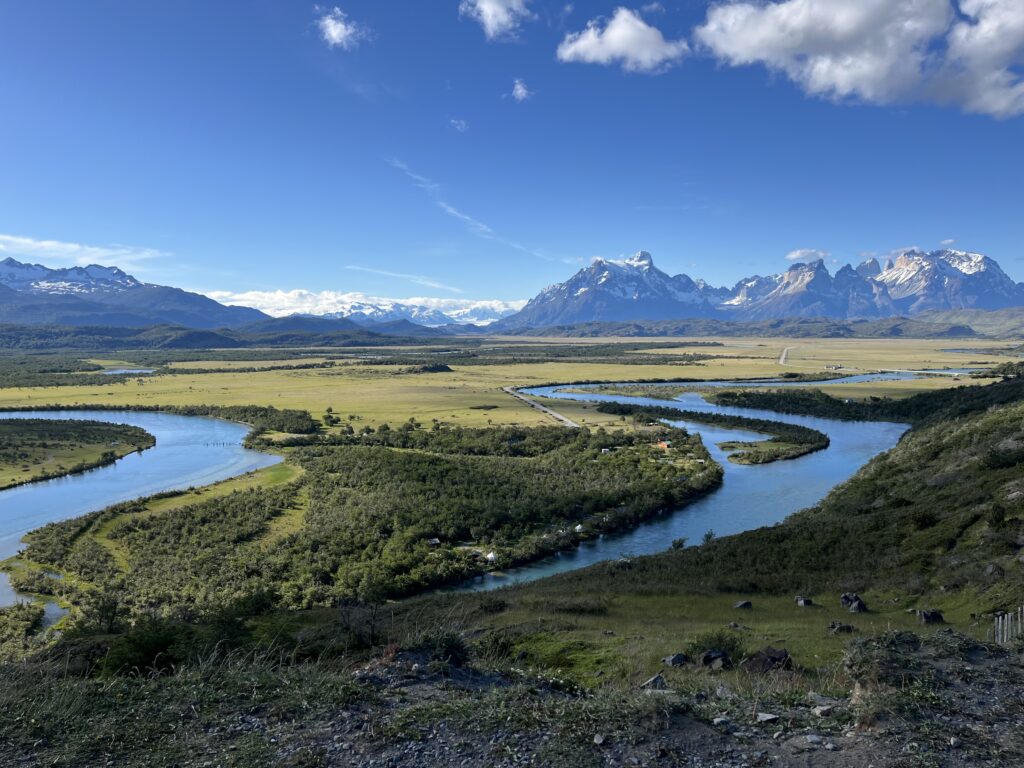
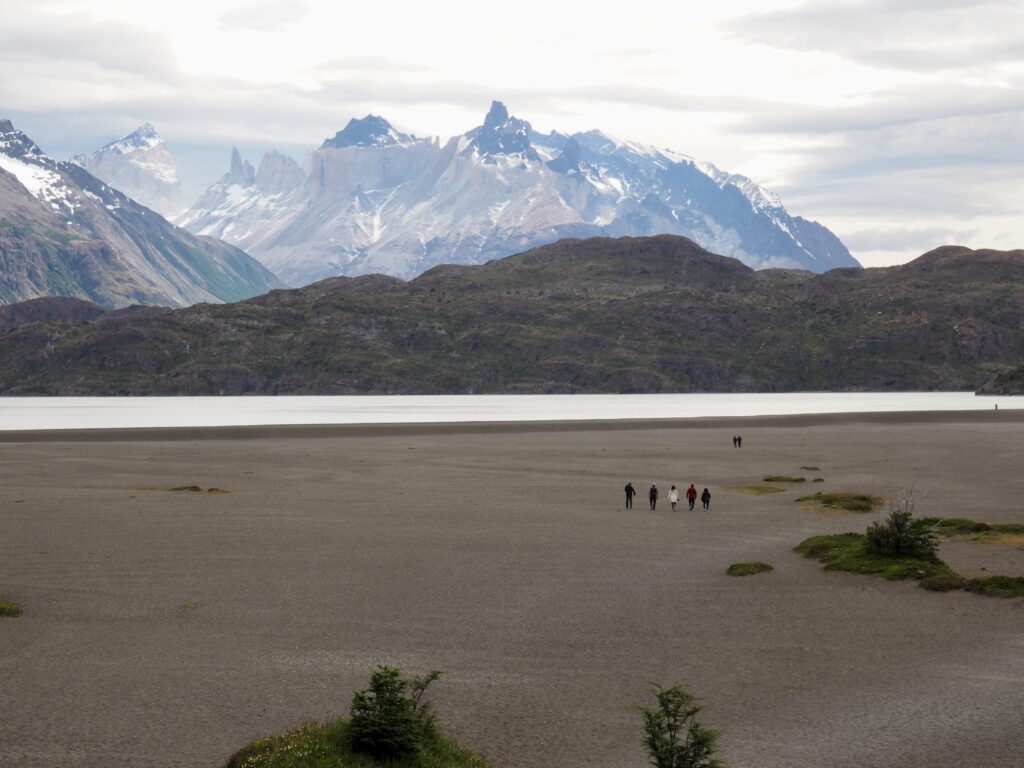
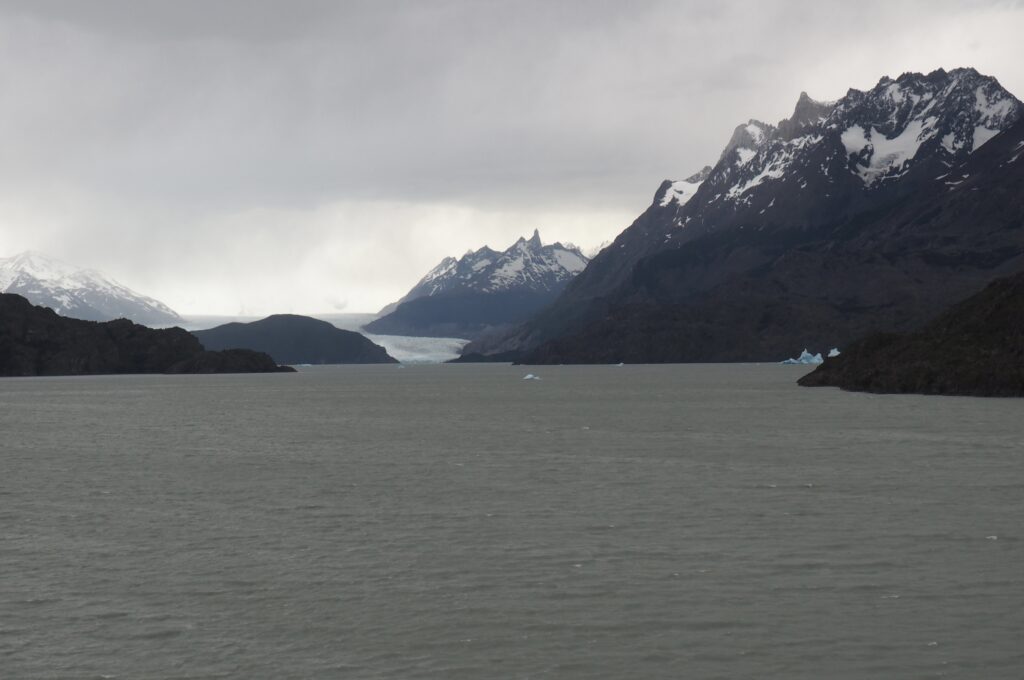
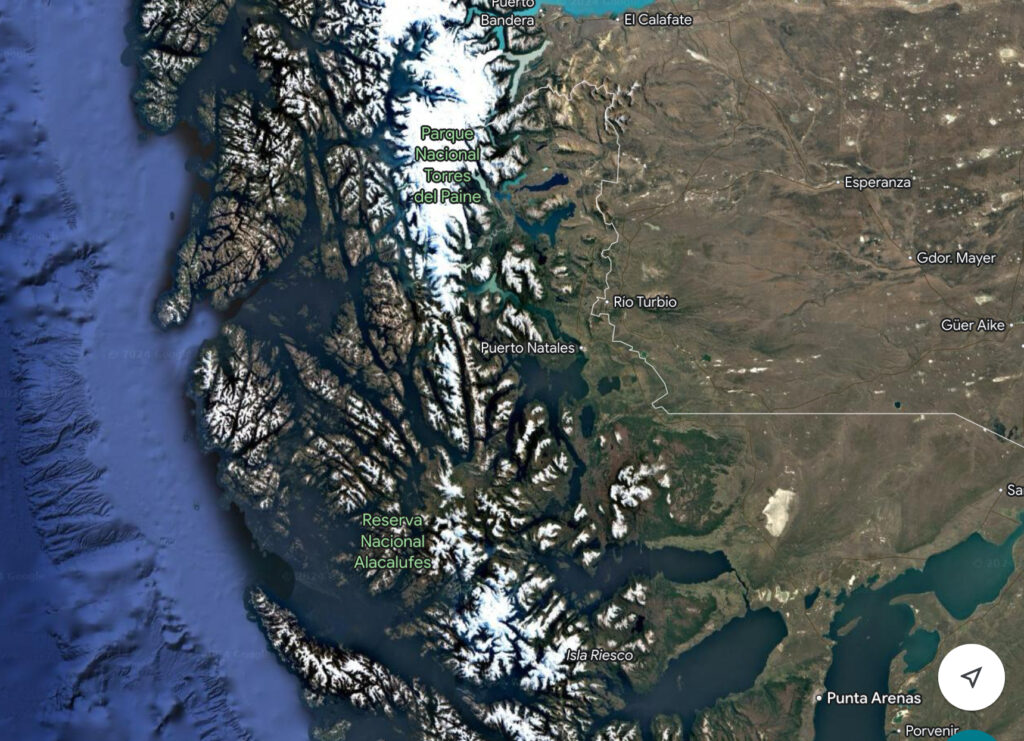











Believe it or not, the wonderful blues you’re seeing in the lakes are pretty true, except for in the photo, below, of Nicholas.







Nicholas explaining the fate of a lake with no outlet. Just like the Great Salt Lake or the Dead Sea, the water has become very saline with a high mineral content, leaving crystalline deposits around its shore.
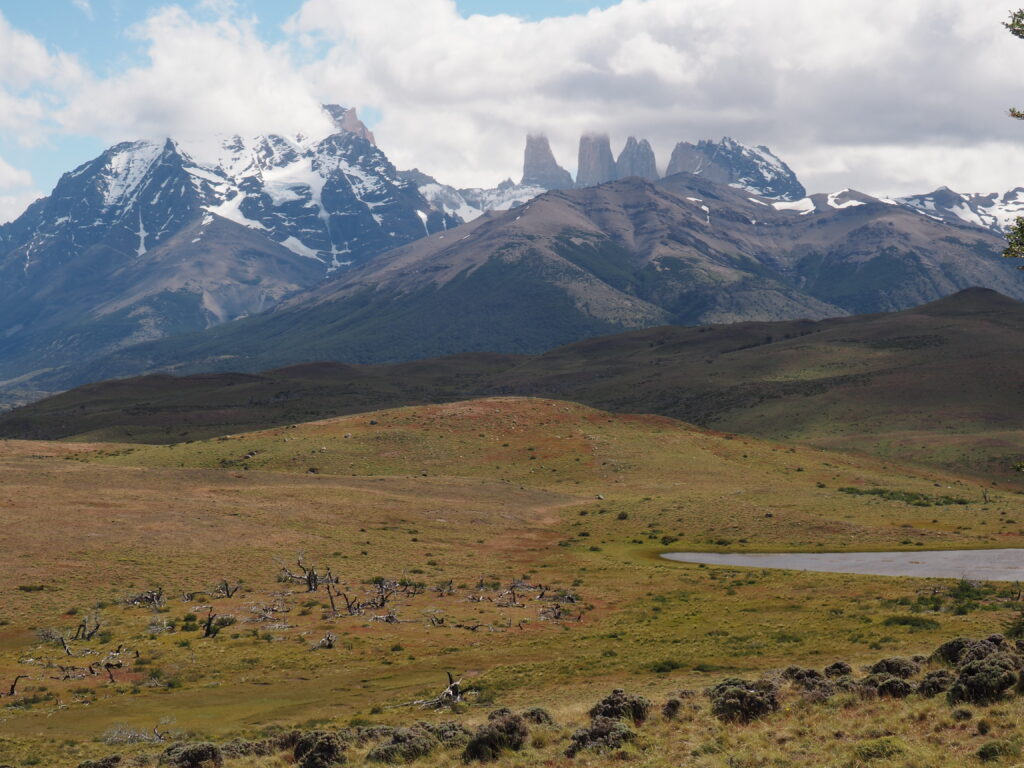







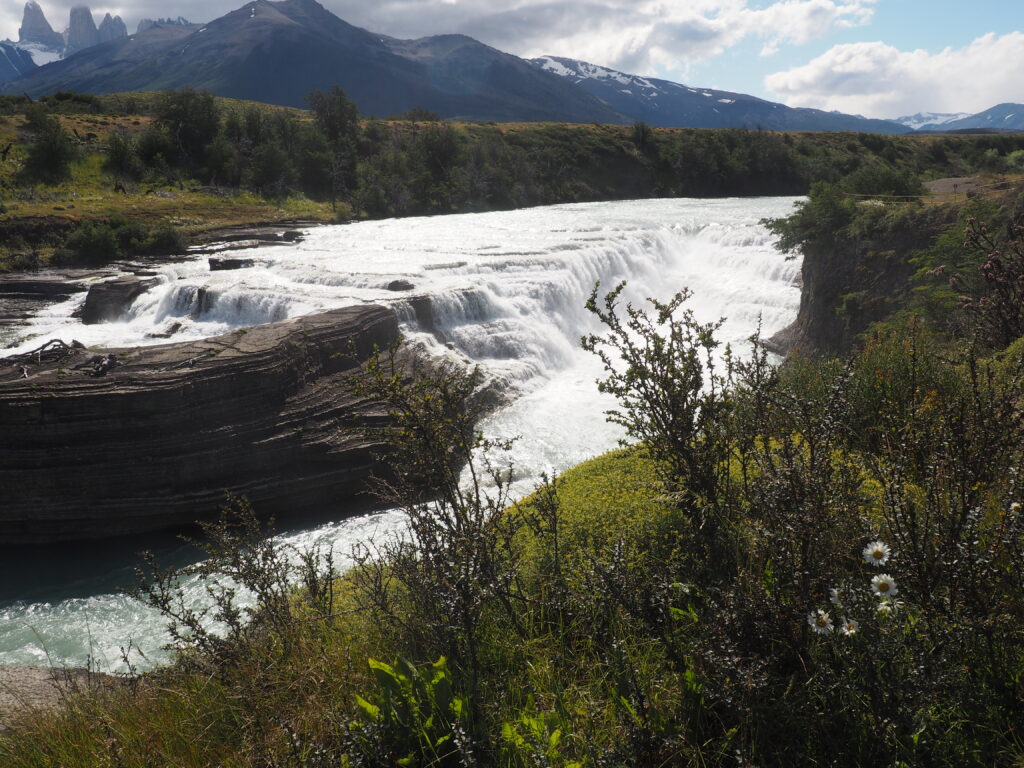
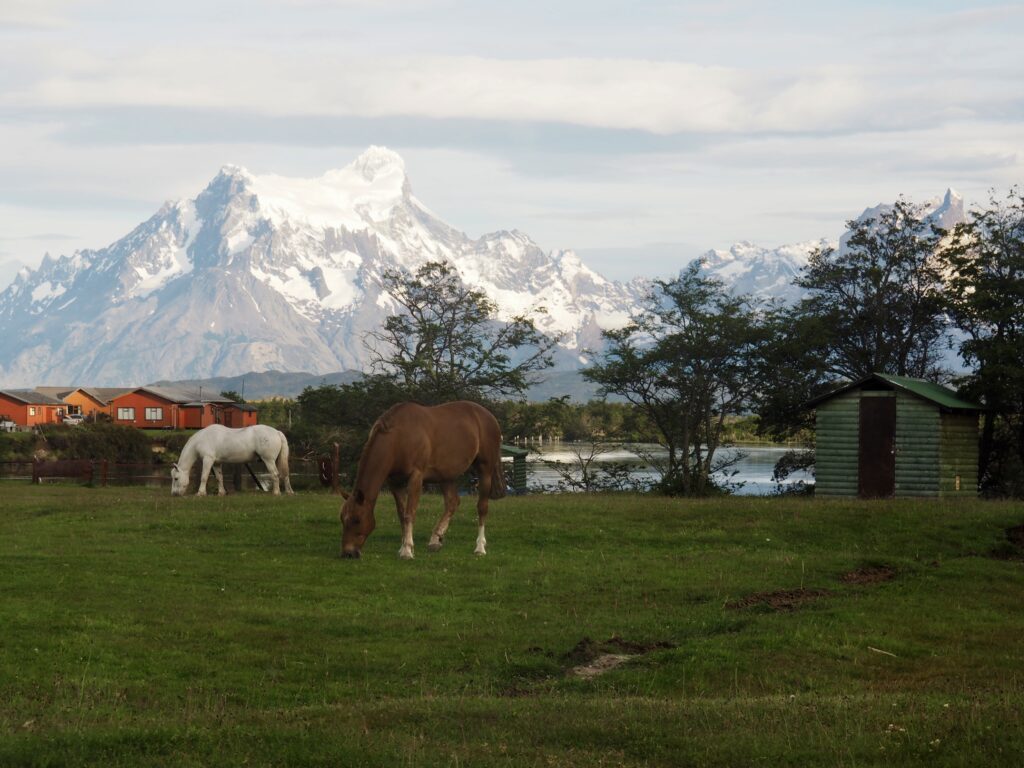
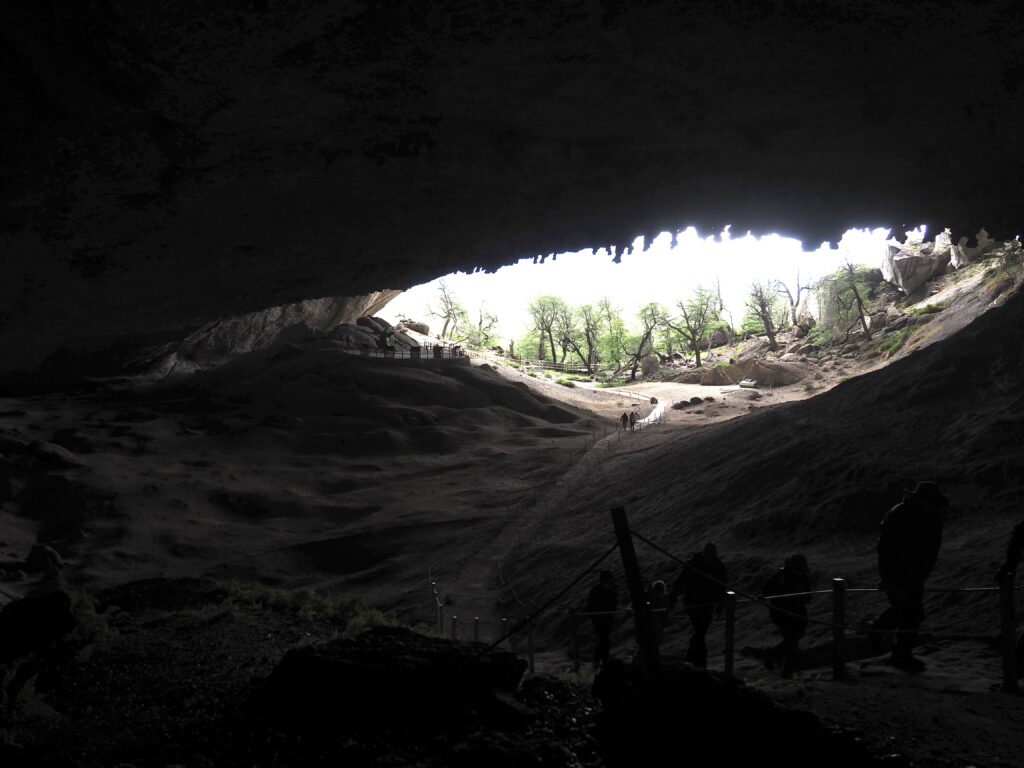





Mummified milodon skin in Museum für Naturkunde in Berlin. When first discovered, people assumed it was from a still living animal, rather than one that had been extinct for 10,000 years.
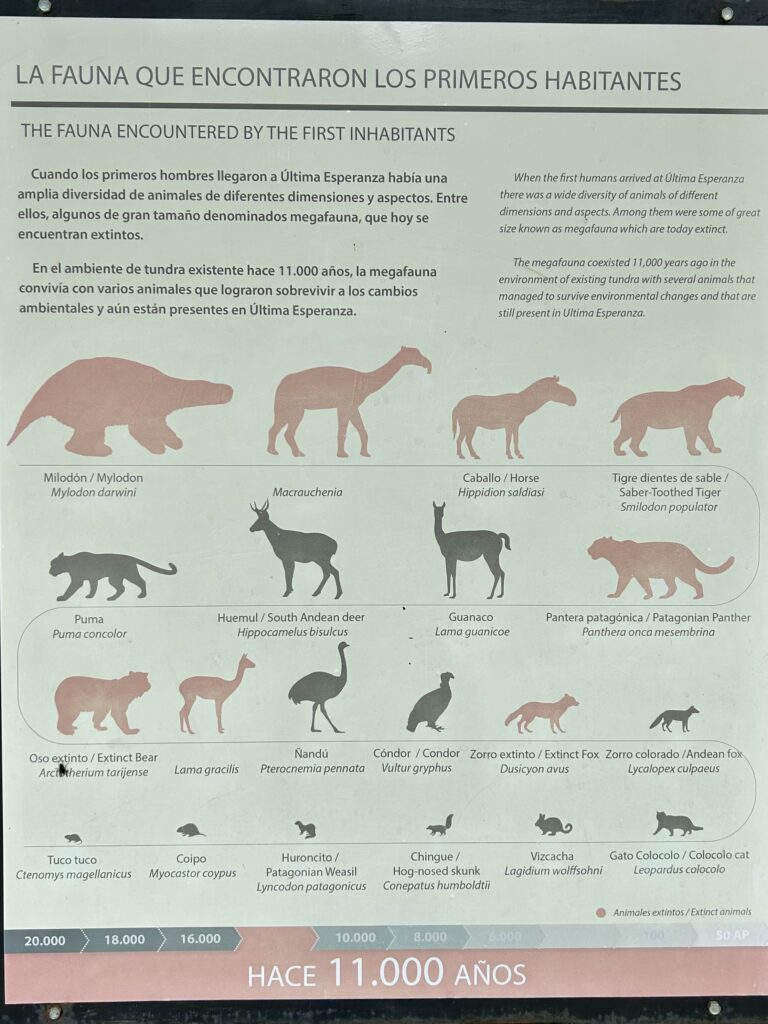
The presence of humans here in southern South America has been documented to about 12,000 years ago. The animals in gray, above, are still around. The largest extinct one is the milodon. The model looming over Amanda is somewhat exaggerated in size and apparently wouldn’t have been able to rear up like that to intimidate us puny hominids.

